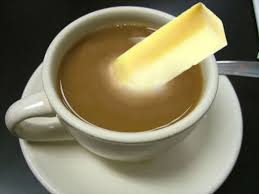One of the most common questions I get asked in the clinic is; “what is a muscle knot?” Before I explain what a muscular knot is, I’ll first explain some basics of how our muscles are made up and how they function.
Muscle fibers run in all different directions throughout the body and are layered on top of each other. This ‘multi directional’ approach allows us to bend and twist with ease. The problem however usually comes when we are sitting, driving and generally moving in a ‘dysfunctional’ manner, not to mention mental and emotional stresses, coupled with the fact that the majority of us are significantly dehydrated. Combine, these factors lead to a loss of flexibility, mobility and ‘sticky’ fibers. This creates adhesions, ‘knots’ and ultimately pain.
Most people have heard of Lactic Acid and are aware that it is something that our body produces as waste but not many people know that Lactic Acid is actually a really sticky substance similar to honey. Like Honey, Lactic Acid crystallises as it comes in to contact with Oxygen. Now If you imagine that sticky substance forming in and around the muscles fibers you are starting to get a good idea of what a muscular knot is like.
Muscular knots are very common but that doesn’t mean that they are harmless, and they shouldn’t be ignored. They create chronic stress on the muscles which can result in micro-tears (this is usually the first time that you will be aware that the knot exists) leading to scar tissue. This scar tissue is less flexible than healthy muscle tissue creating an increase in postural stresses and changes which are hard to reverse.
Even a healthy muscle, when it contracts, has a significant effect on the body; the fibers become shorter, fatter and more bunched up creating a physical squeeze on not only the circulation but also the nerve signals. So, if you imagine a short knotted muscle trying to contract you can see how this would start to magnify and cause not only pain and discomfort in the muscles but also begin to affect our posture and movement efficiency.
If you leave a knot long enough, it can become stiff and hardened (forming fibrosis) due to a restricted flow of oxygen and nutrients. There is a reduction in the removal of noxious waste from the area resulting in muscles which are exhausted, irritated, inflamed and tender and so a Vicious Pain Cycle Begins.
So how can we prevent this from happening and prevent you from getting into a pain cycle?
Well there are several methods which help; diet and hydration are big factors in muscle health; avoiding processed foods, diuretics and refined sugars will help along with taking regular breaks at work and generally keeping mobile and active. But the most effective way of staying on top of knots and identifying potential sites when you may be prone to future (latent) knots is manual therapy such as a Sports Massage.
My role as a Professional Sports Therapist is to identify these knots (active and latent), to break up adhesions and flush out that sticky Lactic Acid. Sports Massage is effective to maintain great muscle health, pliability and the oxygenation of muscle and surrounding soft tissues to keep you at your best.
For more information please contact Claire Jellows BSc (Hons) based at Beach House Chiropractic (01903) 66 00 94.
 Caffeine and fat are potent metabolism stimulators!
Caffeine and fat are potent metabolism stimulators!